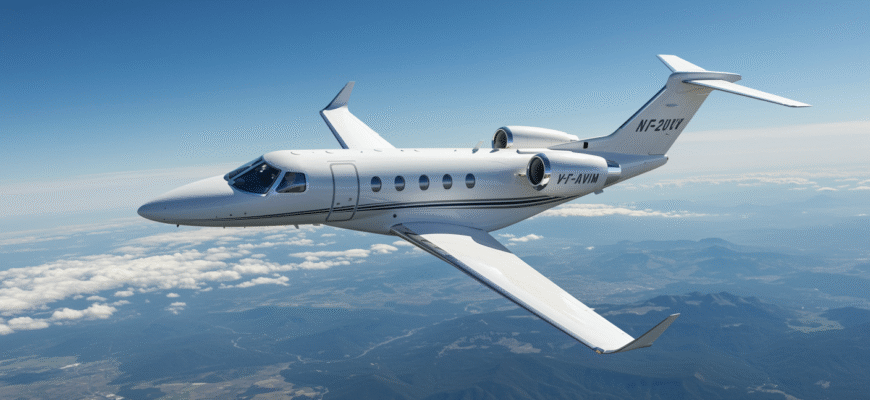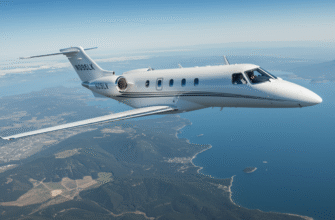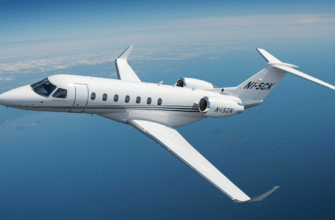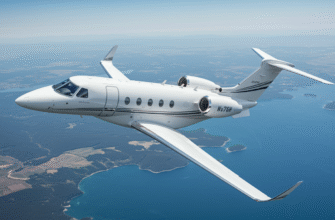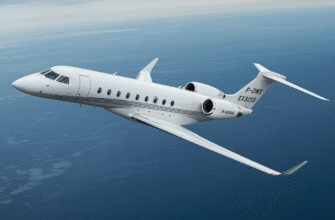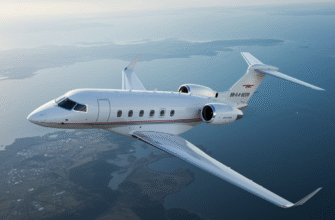If you’ve ever sat in traffic on the way to the airport and thought, “There has to be a better way,” this might just be it. The Bombardier Learjet 40 and 40XR aren’t trying to reinvent private aviation—they’re skipping past the clichés and giving you something that feels better, smoother, and way faster. These are the kind of jets you fly when time is valuable, and style isn’t up for negotiation. They come from a line that’s all about fast climbs, cruise speed that embarrasses competitors, and a cabin that says, “Yeah, I fly private—but I keep it lean.”
For anyone balancing packed weekdays and luxury weekends, the Learjet 40 and its upgraded sibling 40XR get you places—fast. Whether you fly for business, pleasure, or the flex, this jet sneaks into your lifestyle like it belongs there. And here’s the wild part: even if you’ve never touched a yoke or scrolled through a pre-owned listing, these jets matter. They mark a changing tide in how people move, think, and show up in the sky. Let’s break down why.
Quick Facts At A Glance
| Feature | Learjet 40 | Learjet 40XR |
|---|---|---|
| Seating Capacity | 6–7 passengers | 6–7 passengers |
| Max Range | 1,857 nautical miles | 1,692 nautical miles |
| Normal Cruise Speed | 464 knots | 453 knots |
| Estimated Ownership Cost (Annually) | $900K–$1.3M (used model) | $1.1M–$1.5M (used model) |
The numbers show it: this isn’t a toy. It’s a strategic, versatile business asset disguised as a luxury tag-along.
Who This Jet Is Actually For
- Fast-paced business leaders who aren’t here for delays, layovers, or commercial chaos.
- Independent owners who want premium flight experience without premium baggage fees or stadium-sized storage hangars.
- Charter companies looking to balance speed and style—without the heavy costs of midsize or large-cabin jets.
The Learjet 40/40XR is known for keeping a tight schedule. Business travelers love it because they can leave early morning, hit two cities, and still make it back in time for happy hour—or bedtime stories. Private owners jump for it because it’s fast without being oversized. It’s less about flexing with a mega-cabin and more about getting there polished, calm, and ahead of schedule.
For charter operators, it hits the sweet spot: a luxury ride that’s light enough to keep rates marketable but aggressive enough in performance to beat competitors in the air and on paper. It gives your clients more jet, for less jet.
Why This Jet Matters Even If You’re Not A Pilot
Let’s say you’re not charting a flight plan every Saturday—but you’re the kind of person who checks flight trackers more often than your texts. Even from a passenger’s seat or a daydream, here’s why the Lear 40/40XR calls your name.
For starters, time. A Learjet 40 can get to cruising altitude quicker than most light jets, which means fewer minutes wasted flying bumpy low-altitude routes. You skip the TSA lines, the boarding stampedes, and the weird smells of commercial terminals. Hop in, lift off, and coast above weather and stress.
Then there’s the whole vibe of owning or knowing someone who owns one. It’s more than just convenience. It’s a statement. You don’t need to shout luxury when the registration number already did. Private jet ownership has become a bold marker of how you live—and it doesn’t always need to cost Gulfstream money.
Lastly, this jet has legacy heat. Bombardier discontinued production of Learjets in 2021, so both the 40 and 40XR are some of the last of their kind. Models like these won’t just hold value—they’ll turn into collector’s favorites. This isn’t just flying. It’s buying into an aircraft that might be talked about for years across runways and cocktail parties.
From The Ground Up: What It’s Like To Own or Charter a Learjet 40/40XR
If you’ve ever stared longingly at a private jet and wondered, “Could I actually do this?”—you’re not alone. Owning or chartering a Learjet 40 or 40XR feels like something from the movies, but it’s more reachable (and more complex) than you might think.
First-time buyer or dreamer intel
Buying into private aviation isn’t just about the purchase price. You’re also stepping into a whole lifestyle—fast flights, private hangars, nonstop maintenance, and a jet that never lets up. Here’s what that means in real terms:
- Pre-owned pricing range: Expect $1.5 to $3 million depending on condition, upgrades, and total flight hours.
- New vs pre-owned: Bombardier stopped making Learjets in 2021. Every Lear 40 or XR is now pre-owned, but XR conversions make many models as capable as a brand-new bird.
- Maintenance: Engine overhauls and inspections come fast and are pricey—these aren’t low-maintenance toys. Budget $300k+ annually for regular ops.
- Pilot and crew: You need at least two certified pilots to fly legally; many owners have a full-time crew.
- Hangar/storage: Plan for $3,000–$6,000 per month, but more in high-traffic cities.
Owning one isn’t a casual choice—it’s for those already playing high-stakes poker in their day job, because this jet doesn’t sleep.
Chartering one instead of buying
If owning sounds wild, charter might be better for your vibe. You don’t get the keys, but you still get the altitude.
Hourly cost: Charter rates float between $3,000 and $4,500 per hour depending on region, demand, and XR model availability.
Charter makes more sense if you fly less than 200 hours a year or want to skip the hassle of crew and maintenance. High-frequency executives and jetsetters often rent for work weeks and own for freedom trips—it’s all about how often your calendar demands airspace.
Lear 40 vs. 40XR on charter: The XR costs a bit more—but it’ll get you there faster, with better hot weather takeoff performance. If your route involves high elevations or runways surrounded by mountains (think: Colorado or Mexico City), request the XR every time.
Real-world availability and accessibility
These jets aren’t unicorns, but you won’t find them just lounging around every tarmac either.
In North America, dozens of Lear 40/40XRs are either in charter fleet rotation or privately owned—with heavy presence in Los Angeles, Dallas, Miami, and Chicago. The EU has fewer operators, but some major charter brokers can get you one with lead time.
Looking for a jet broker? Try firms that specialize in light jet management and pre-owned Lear inventory. Deal with brokers who know the Learjet world—they understand things like XR retrofits versus stock builds, and that makes a huge price and performance difference.
Lear 40 vs Phenom 300 vs Citation CJ3? The Phenom 300 offers a more modern cabin and slightly better fuel economy, while the CJ3 is softer on takeoff noise and hangar costs. But neither outruns the Lear 40XR’s speed or high-altitude punch. Put simply: the Lear chases altitude like it’s personal.
Why the 40XR Changed the Game (Slightly)
What upgraded from the Learjet 40
The XR isn’t a full redesign—it’s more like leveling up a character in a game. What you get is better engines: the TFE731-20BR with better performance in thinner air. That means extra confidence during hot-and-high departures.
Its increased maximum takeoff weight (21,000 lbs vs. 20,350 lbs) translates to more options: take that extra client, more bags, or just don’t sweat the fuel load.
Range went up by about 60–140 nautical miles. Doesn’t sound huge until you’re choosing between refueling in Oklahoma or pushing straight to LA.
Practical benefits that just feel better
The XR gets up off shorter runways with less strain—perfect for slipping into those smaller, non-commercial hubs. That means skipping big city airport drama and getting closer to your final destination.
It also hits altitude faster—about 15 minutes to FL370—so the rough stuff below 20,000 feet? You barely notice it. And with stronger resale demand, the XR holds its value better than you’d expect from this size category.
Emotional Altitude: Flying Private in a Jet That Feels Like You
The rush — what it really feels like to pull back and climb
That moment the wheels lift? Unreal. Whether riding shotgun with the captain or sipping something fizzy in the leather seat, speed feels clean, vertical, and almost ridiculous. You’re not crawling through the sky—you’re being flung into it.
The cabin’s tight but not suffocating. When everything is tailored—temperature, snacks, lighting, playlist—you realize this isn’t just how the 1% travels. It’s how they breathe.
And yes, no kid is kicking your seat. Nobody behind you is sneezing, snoring, or peeking at your screen. It’s quiet, personal, and just a little smug.
Flying dreams, ownership realities
Owning a jet is not just practical—it feels like claiming something. A declaration. Some buy jets to save time. Others? To flex legacy. Collectors look at Learjets like retired astronauts—products of an era when speed was a thrill, not just an algorithm.
And for real aviation fanatics? The Lear 40/40XR scratches that itch. It’s not too big to be boring. It’s not too new to lack character. It’s the one you keep even when you could afford “bigger.”
Is this the beginning of your jet story or just a fascinating detour?
This jet opens doors. Skip TSA. Choose your own runway. Sleep in your own bed every night after meetings across the country. Or disappear with your people to a beach nobody’s talking about—yet.
Is it worth the hustle? Depends. Are you in it for spreadsheets or stories? If you like control, altitude, and airports without terminals, it just might be.
Because being the person who just gets in a Learjet and goes? That’s a whole different frequency. And maybe you’re ready to tune in.
